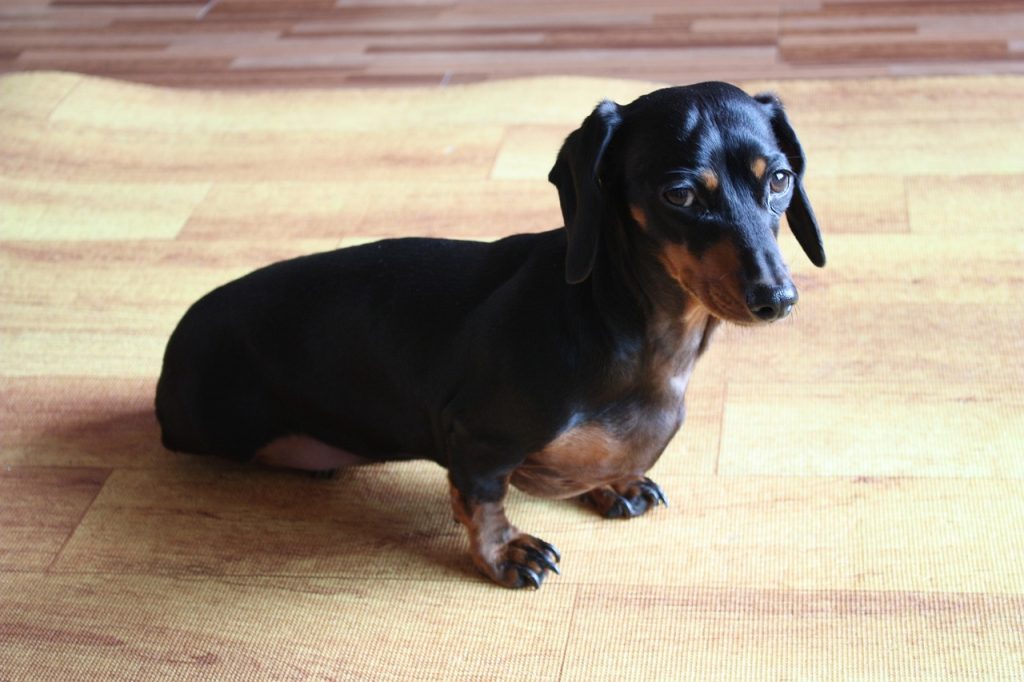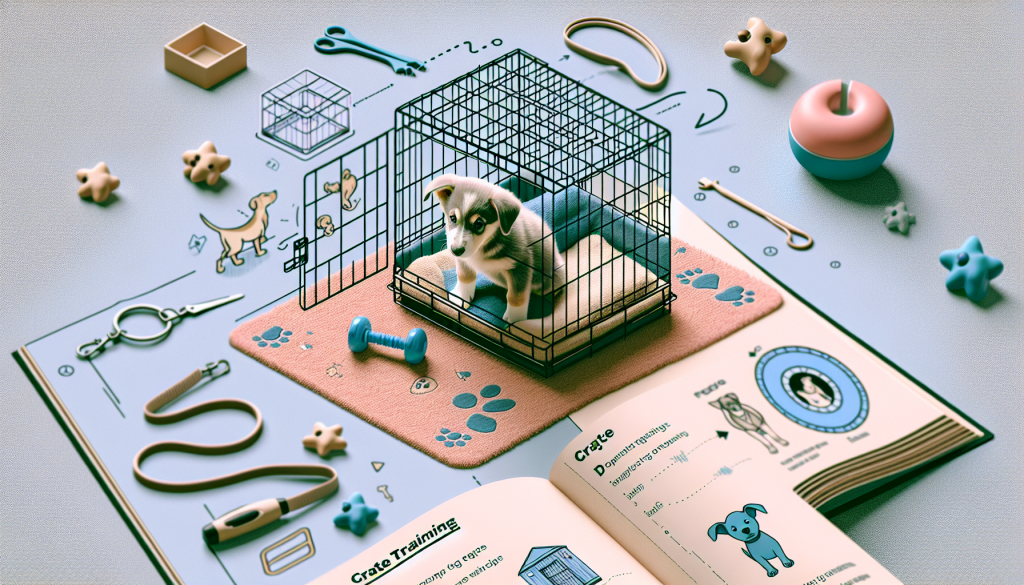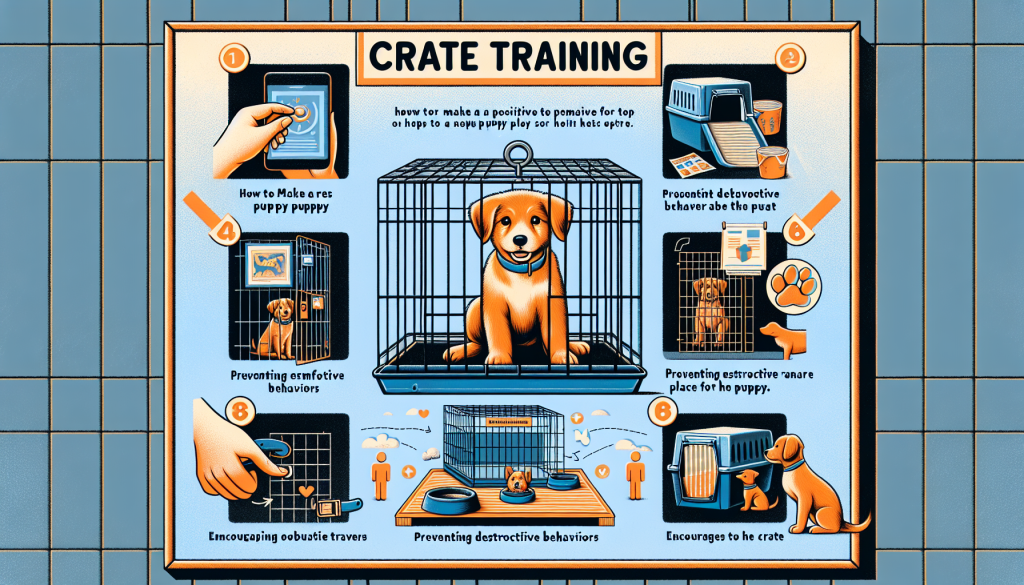Are you a proud new puppy parent, but finding it challenging to teach your furry friend to feel comfortable in their crate? Don’t worry, we’ve got you covered! In this article, we will guide you through the process of crate training a puppy, providing you with helpful tips and techniques to make this process a breeze. Whether you’re dealing with a restless pup or simply looking for ways to establish a safe space for them, our comprehensive guide will ensure that crate training becomes a positive and rewarding experience for both you and your adorable canine companion.
Choosing the Right Crate
Choosing the right crate for your puppy is an essential first step in the crate training process. The size and type of crate you select will greatly impact your puppy’s comfort and success with crate training.
Size and Type of Crate
When it comes to crate size, it’s important to choose a crate that allows your puppy to stand up, turn around, and lay down comfortably. A crate that is too small can be cramped and uncomfortable for your puppy, while a crate that is too large may give them too much space, making it difficult for them to feel secure.
In terms of crate type, there are a few options to consider. Wire crates are popular due to their durability and ability to fold for easy storage. They also allow for excellent ventilation and visibility. Plastic crates, on the other hand, offer a more enclosed and den-like environment that some puppies may prefer. Ultimately, the type of crate you choose will depend on your puppy’s individual needs and preferences.
Comfort Features
To ensure your puppy feels cozy and safe in their crate, it’s important to include comfort features. Start by adding appropriate bedding, such as a soft blanket or pet bed, to provide a comfortable resting surface. Avoid using anything that is too thick or plush, as it may lead to accidents or discomfort.
Additionally, consider placing a few toys or chew treats in the crate to keep your puppy occupied and distracted. While it’s important to choose toys that are safe and durable, avoid items with loose parts or anything that could potentially be a choking hazard.
Safety Considerations
Safety should always be a top priority when crate training your puppy. Ensure that the crate you choose is sturdy and secure, with no sharp edges or potential hazards. Remove any collars or tags that could get caught on the crate during your puppy’s time inside.
It’s also important to consider the location of the crate. Place it in an area of your home that is quiet and away from any potential disturbances. Avoid placing the crate near heating or cooling vents, as extreme temperatures can be uncomfortable for your puppy.
Preparing the Crate
Once you have chosen the right crate for your puppy, it’s time to prepare it for their use. Taking the time to properly set up the crate will help create a positive environment for your puppy and make the crate training process smoother.
Location
When it comes to selecting a location for the crate, it’s important to find a spot that is easily accessible and allows your puppy to feel connected with you and the rest of the family. Consider placing the crate in a common area where your puppy can still see and hear you, but that also provides some level of privacy and quiet.
Bedding
To make the crate as comfortable as possible, add some bedding that your puppy can snuggle up on. A soft blanket or pet bed will provide a cozy surface for them to lay on. Just be sure to choose bedding that is easy to clean, as accidents can happen during the crate training process.
Toys and Treats
Adding a few toys or chew treats to the crate can help keep your puppy occupied and entertained. Choose toys that are safe and durable, and avoid anything with small or easily detachable parts. Additionally, placing a few treats or interactive toys in the crate can create positive associations and make your puppy more excited to enter the crate.

This image is property of pixabay.com.
Introducing the Crate to Your Puppy
Now that you have prepared the crate, it’s time to introduce it to your puppy. The goal is to create positive associations with the crate and make it an inviting and comfortable space for them.
Positive Associations
Start by associating the crate with positive experiences. Place some treats or their favorite toys near the crate and allow your puppy to investigate and explore. Encourage them to go inside the crate by using treats or praise, but avoid forcing them. Allow them to enter and exit the crate freely.
Short Periods of Time
Once your puppy feels comfortable entering the crate, gradually increase the amount of time they spend inside. Begin with short periods, such as a few minutes, and gradually work your way up to longer durations. This will help your puppy associate the crate with positive experiences and build their confidence.
Using Food Rewards
Food rewards can be a powerful tool when crate training your puppy. Use treats to reward your puppy for entering the crate and staying inside for short periods of time. This positive reinforcement will help them understand that being in the crate is a rewarding experience. Gradually decrease the frequency of treats as they become more accustomed to the crate.
Establishing a Routine
Establishing a routine is key to successful crate training. Consistency and predictability will help your puppy feel secure and comfortable in their crate.
Feeding Schedule
Establish a regular feeding schedule for your puppy and incorporate the crate into this routine. Feed your puppy their meals inside the crate, with the door open initially. As they become more comfortable, gradually close the door while they eat. This will help them associate the crate with positive experiences and create a sense of security.
Potty Breaks
Just like humans, puppies have to go to the bathroom regularly. To avoid accidents and teach your puppy proper bathroom habits, establish a consistent potty break routine. Take your puppy outside to their designated potty area immediately before and after crate time, as well as at regular intervals throughout the day. This will help reinforce the idea that outside is the appropriate place to relieve themselves.
Exercise and Playtime
In addition to regular potty breaks, it’s important to provide your puppy with daily exercise and playtime. This will help burn off excess energy and make them more relaxed during crate time. Incorporate exercise and play sessions both before and after crate time to ensure your puppy is sufficiently tired and ready for rest.

Using the Crate for Training
The crate can be a valuable tool for various aspects of your puppy’s training, from bathroom training to leash training. By utilizing the crate effectively, you can expedite the training process and establish good behaviors.
Bathroom Training
Using the crate for bathroom training involves creating a designated space for your puppy to relieve themselves. Start by determining the length of time your puppy can comfortably hold their bladder or bowel movements. Use the crate to confine your puppy for short periods, gradually increasing the duration as they become more capable of controlling their bodily functions. Take them outside immediately after releasing them from the crate to encourage bathroom habits.
Crate Games
Crate games can help make crate training an enjoyable and engaging experience for your puppy. Start by tossing treats or toys into the crate and encourage your puppy to go inside to retrieve them. You can also hide treats or toys in the crate for your puppy to find, promoting positive associations with the crate and encouraging them to willingly enter.
Leash Training
The crate can be used as a valuable tool for leash training. Begin by attaching the leash to your puppy’s collar or harness while they are inside the crate. Allow them to explore the crate while wearing the leash, gradually increasing the time they spend with it attached. This will help them acclimate to the feeling of wearing a leash and make the transition to walking on a leash smoother.
Addressing Separation Anxiety
Some puppies may experience separation anxiety when left alone in the crate. It’s important to address this issue promptly and ensure your puppy feels safe and comfortable even when you’re not present.
Gradual Separation
If your puppy shows signs of anxiety when left in the crate, start by practicing gradual separation. Begin by leaving the room for just a few seconds and gradually increase the duration over time. This will help your puppy build confidence and trust that you will return.
Desensitization
To help desensitize your puppy to being alone in the crate, provide distractions and comforts. Leave them with puzzle toys or interactive feeders that keep them occupied and mentally stimulated. Additionally, consider using calming aids, such as pheromone diffusers or calming music, to create a soothing environment for your puppy.
Professional Help
If your puppy’s separation anxiety persists or worsens despite your efforts, consider seeking professional help. A certified dog trainer or animal behaviorist can assess your puppy’s behavior and provide tailored guidance and support to address their separation anxiety.

Avoiding Common Mistakes
To ensure successful crate training, it’s crucial to avoid common mistakes that can hinder your puppy’s progress and potentially create negative associations with the crate.
Punishment
Never use the crate as a form of punishment. The crate should be a safe and comfortable space for your puppy, and associating it with negative experiences can lead to fear and anxiety. Avoid using the crate as a time-out spot or confining your puppy for extended periods as a form of punishment.
Leaving for Too Long
Avoid leaving your puppy confined in the crate for longer than they can comfortably hold their bladder or bowel movements. Prolonged periods in the crate can lead to accidents and discomfort, as well as inhibit your puppy’s socialization and development. If you need to be away for an extended period, arrange for someone to let your puppy out for potty breaks and playtime.
Using the Crate as Punishment
Similarly, refrain from using the crate as a punishment tool. Associating the crate with negative experiences can make your puppy resistant to entering or staying inside. Instead, focus on creating positive associations and using the crate as a tool for training and relaxation.
Tips for Overnight Crate Training
Overnight crate training requires some additional considerations to ensure a smooth transition to sleeping in the crate.
Bedtime Routine
Establish a consistent bedtime routine that incorporates the crate. Create a calming atmosphere by dimming the lights, playing soft music, or using a white noise machine. Encourage your puppy to enter the crate with treats or toys, and make sure they have the necessary potty break before bedtime.
Clothing Comfort
Consider your puppy’s clothing comfort when crate training overnight. Avoid using collars or restrictive clothing that could become tangled or uncomfortable during the night. Opt for a comfortable, well-fitting harness or ensure that your puppy sleeps naked in the crate.
Nighttime Potty Breaks
Puppies have small bladders and may need to go to the bathroom during the night. Plan for nighttime potty breaks to avoid accidents and disruptions to sleep. Take your puppy outside immediately before bedtime and set an alarm to wake up and let them out at regular intervals throughout the night. Gradually increase the time between nighttime potty breaks as your puppy becomes able to hold their bladder for longer durations.
Lengthening Crate Time
As your puppy becomes more accustomed to the crate, you can begin lengthening the amount of time they spend inside.
Gradual Increase
To ensure a smooth transition, gradually increase the duration of crate time. Start by adding a few minutes to each session, gradually working your way up to hours. This will help your puppy develop the ability to relax and settle in the crate for extended periods.
Mental Stimulation
Prolonged crate time can be mentally challenging for your puppy. To keep their minds engaged and prevent boredom, provide mental stimulation in the form of puzzle toys, treat-dispensing toys, or interactive feeders. These activities can provide mental exercise and help occupy your puppy’s time in the crate.
Prime Time for Crate
Choose appropriate times to use the crate for longer durations. This may include periods when you are busy or unable to supervise your puppy, such as during meal preparation or when you need to run errands. By utilizing the crate during these prime times, you can create positive associations and help your puppy understand that the crate is a safe and comfortable place to be.
Maintaining Positive Associations
Throughout the crate training process, it’s important to consistently maintain positive associations with the crate. This will ensure that your puppy continues to view the crate as a safe and inviting space.
Reward System
Continue to use a reward system to reinforce your puppy’s positive behavior in the crate. Whenever they willingly enter or stay in the crate, provide praise, treats, or their favorite toys. Consistent positive reinforcement will help your puppy understand that good things happen when they are in the crate.
Random Treats
To keep your puppy engaged and excited about the crate, occasionally surprise them with random treats when they are inside. This unexpected reward can create a sense of anticipation and make the crate an even more appealing place to be.
Occasional Feeding in Crate
As your puppy becomes comfortable and reliable in the crate, occasionally feed them their meals inside for added positive associations. Not only does this reinforce the idea that the crate is a safe and pleasant space, but it also helps prevent resource guarding or aggression around food.
By following these comprehensive guidelines, you can successfully crate train your puppy and provide them with a safe and comfortable space to call their own. Remember to be patient, consistent, and always use positive reinforcement to create a positive association with the crate. Happy crate training!